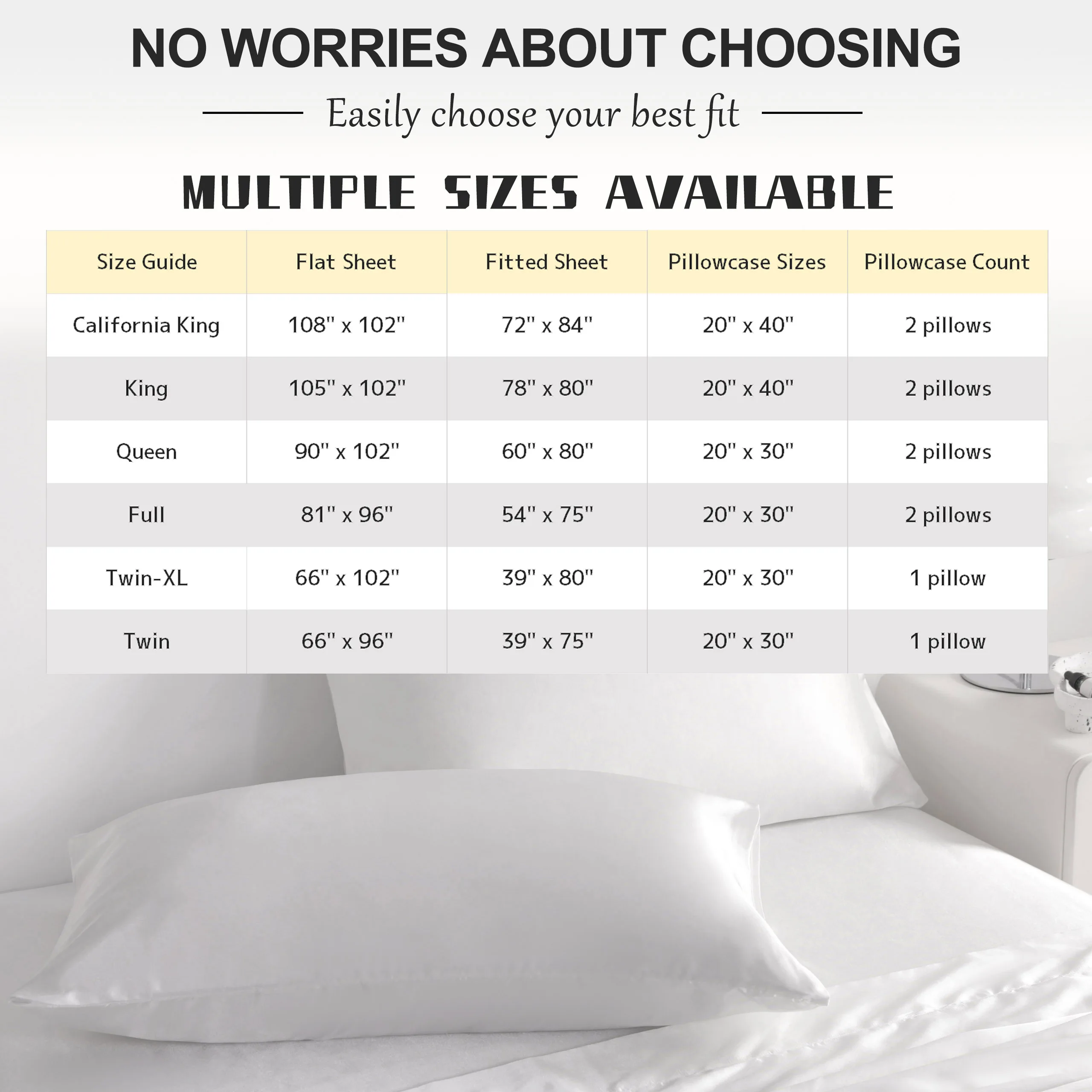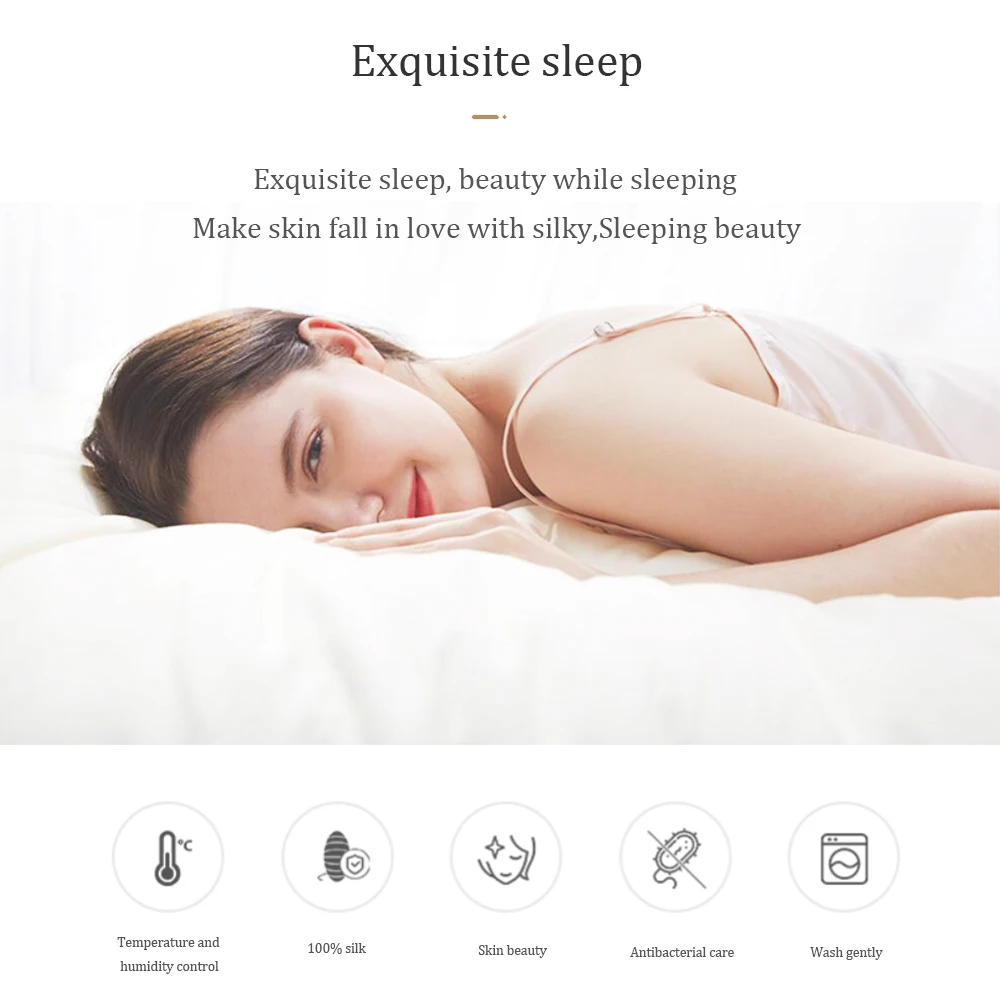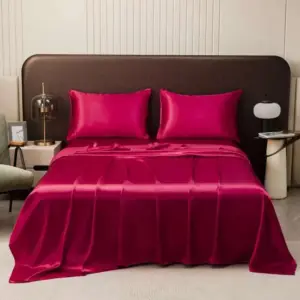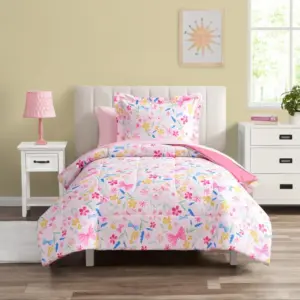Introduction: Understanding the Silk vs. Cotton Bedding Debate
The material that covers your bed does more than just look pretty—it directly impacts your sleep quality, skin health, and overall wellness. With approximately one-third of our lives spent sleeping, the fabric touching our skin for those 8 hours daily deserves careful consideration. In the world of premium bedding, two natural fibers stand out above the rest: silk and cotton.
Many sleepers make bedding choices based on what they’ve always used rather than what might best suit their specific needs. The tactile differences between silk and cotton create entirely different sleep experiences, yet these distinctions aren’t always well understood by consumers.
This comprehensive guide aims to cut through the confusion with clear, evidence-based comparisons of silk and cotton bedding. We’ll explore everything from comfort and temperature regulation to maintenance requirements and cost considerations—helping you make an informed choice based on your unique needs.
At Sanctuary Soft, our expertise in premium bedding materials, particularly the amazing benefits of Mulberry silk sheets, has given us deep insight into how different fabrics affect sleep quality. Let’s dive into what makes each material special before comparing their performance across various categories.
What Makes Silk Bedding Special?
Silk is a natural protein fiber produced by silkworms—specifically the Bombyx mori moth for the highest quality mulberry silk. Unlike plant-based fibers, silk’s protein composition creates a uniquely smooth texture that glides gently against skin and hair.
The premium nature of silk isn’t just marketing—it stems from the intensive production process. A single silkworm produces roughly 1,000 yards of silk filament, and thousands are needed to create just one pound of raw silk. This labor-intensive process explains why genuine silk commands higher prices than most other fabrics.
Mulberry silk stands as the gold standard in silk bedding due to its exceptional quality. What makes mulberry silk special is its longer, more uniform fibers that create a smoother, more durable fabric than other silk varieties.
Quality silk bedding is measured in momme weight (similar to thread count for cotton), with the optimal range for bedding falling between 19-25 momme. This range balances luxurious feel with practical durability.
What truly sets silk apart is its unique structural composition. Silk contains 18 amino acids and natural proteins that mirror components in human skin. These proteins, along with silk’s incredibly smooth surface, create bedding that interacts with your skin and hair differently than any other material.
Our Mulberry silk sheets collection showcases these premium qualities with options ranging from 19 to 25 momme weights for different preferences.
Understanding Cotton Bedding Essentials
Cotton stands as perhaps the most recognized natural fiber in bedding, with a history spanning thousands of years. This plant-derived fabric has earned its reputation through versatility, breathability, and natural comfort.
Not all cotton is created equal. Egyptian cotton, known for its extra-long staple fibers (typically exceeding 1.4 inches), delivers superior softness and durability. Pima and Supima (American-grown pima) cottons offer similar quality with long staple fibers. Standard Upland cotton, while more affordable, typically has shorter fibers resulting in a less refined feel.
The weaving method dramatically affects how cotton bedding performs:
– Percale: A simple one-over, one-under weave creating a crisp, cool feel ideal for hot sleepers
– Sateen: A one-under, three-over weave producing a silky-smooth, lustrous surface
– Flannel: A brushed cotton weave that traps air for warmth in colder seasons
Thread count—the number of threads woven into one square inch of fabric—serves as a common quality indicator for cotton. While higher isn’t always better, quality cotton bedding typically ranges between 200-800 thread count, with diminishing returns beyond this range.
Cotton’s enduring popularity stems from its excellent breathability, moisture absorption (up to 27% of its weight), and versatility across different climates. Understanding these basics provides context for our comparison, similar to how the complete guide to Mulberry silk bed sheets comprehensively explores silk’s characteristics.
Comfort and Feel: Texture That Transforms Sleep
The tactile experience of bedding dramatically influences sleep quality, and silk and cotton deliver fundamentally different sensations.
Silk creates an almost weightless, frictionless surface against your skin. This unique “floating” sensation comes from silk’s protein structure and incredibly smooth fibers. With 43% less friction against skin compared to cotton, silk glides across your body rather than grabbing at skin or hair. Many describe the experience as sleeping on a cloud—light, smooth, and luxurious.
Cotton offers varied textures depending on the weave. Percale delivers a crisp, clean feel similar to a freshly ironed shirt. Sateen provides a smoother, more lustrous surface that, while not as frictionless as silk, offers a gentle drape. Flannel cotton creates a soft, cozy sensation perfect for colder months. This versatility makes silk sheets and cotton sheets appeal to different sensory preferences.
The psychological comfort aspect shouldn’t be overlooked. Many find silk’s luxury feel creates a sense of pampering that enhances relaxation. Cotton’s familiar comfort carries associations of cleanliness and home that can promote security and restfulness. These subtle psychological factors can be as important as physical properties in determining which material helps you sleep better.
Temperature Regulation: Staying Comfortable Year-Round
How bedding manages temperature significantly impacts sleep quality, with both silk and cotton offering distinct approaches to keeping you comfortable.
Silk possesses natural thermoregulating properties thanks to its unique structure. The hollow fibers create excellent insulation in cooler temperatures while allowing heat to escape in warmer conditions. This remarkable adaptability helps maintain body temperature within approximately 4°F of the optimal sleeping temperature regardless of season. Silk bedding’s thermal properties make it particularly valuable for those who experience temperature fluctuations throughout the night.
Cotton excels through superior breathability and moisture-wicking. Its plant-based fibers can absorb up to 27% of their weight in moisture before feeling wet, pulling sweat away from your body. This makes cotton particularly effective in humid conditions or for heavy sweaters. However, once saturated, cotton can feel uncomfortably damp and may not dry quickly during sleep.
For hot sleepers, percale cotton’s crisp weave maximizes airflow, creating excellent ventilation on warm nights. Cold sleepers might prefer silk’s insulating properties or flannel cotton’s heat retention. Year-round comfort might be best achieved through seasonal rotation—cotton percale sheets in summer and silk or flannel cotton in winter.
The ideal choice ultimately depends on your personal temperature regulation needs and local climate conditions.

Skin and Hair Benefits: Beyond Basic Comfort
The bedding material against your skin for 8+ hours nightly significantly impacts skin and hair health, with silk and cotton offering distinctly different benefits.
Silk delivers impressive skin advantages due to its ultra-smooth surface and natural proteins. With minimal friction against facial skin, silk helps prevent sleep creases that can eventually develop into permanent wrinkles. The sericin protein naturally present in silk helps skin retain moisture, unlike absorbent cotton that can draw hydration away from skin. These mulberry silk bedding skin benefits make silk particularly valuable for those concerned about premature aging.
For hair health, silk’s friction-reducing properties prevent the pulling, tangling and breakage common with cotton pillowcases. Studies suggest silk reduces hair breakage by up to 43% compared to cotton. This means less frizz, maintained styling, and healthier hair over time—particularly beneficial for those with curly, fine, or damaged hair.
Cotton offers its own advantages through superior breathability. This makes it suitable for those with certain sensitive skin conditions that require maximum airflow. The absorbent nature of cotton can also benefit very oily skin types by wicking away excess sebum. However, this same absorption can strip necessary natural oils from most skin types, potentially leading to dryness and irritation.
For those concerned with both skin appearance and hair health, silk generally offers more comprehensive benefits, particularly as we age and skin becomes more susceptible to creasing and dehydration.
Hypoallergenic Properties: For Sensitive Sleepers
For allergy sufferers and those with sensitive skin, the hypoallergenic qualities of bedding can make the difference between restful sleep and nighttime discomfort.
Silk possesses natural resistance to common allergens. Its protein structure creates an inhospitable environment for dust mites, which can reduce allergic reactions by up to 70% compared to other bedding materials. Additionally, silk contains natural fungal resistance due to the presence of sericin protein, inhibiting the growth of mold and mildew. These properties make silk pillowcases particularly beneficial for those with respiratory sensitivities.
Cotton lacks these inherent resistant properties but excels through superior washability. Cotton bedding can typically withstand frequent hot washing (130°F+), which effectively eliminates most allergens. For those with chemical sensitivities, organic cotton provides a hypoallergenic option free from pesticides and harmful processing chemicals.
For people with asthma, eczema, or respiratory allergies, silk’s natural resistance to dust mites and other allergens typically provides better protection with less maintenance. However, for those allergic to specific proteins or with extremely sensitive skin that requires frequent washing, cotton’s durability in high-temperature laundering might be preferable.
The ideal choice depends largely on your specific sensitivities and whether you prefer built-in resistance (silk) or the ability to aggressively clean (cotton) as your primary defense against allergens.
Durability and Longevity: Investment Value
Understanding the lifespan of premium bedding helps evaluate the true value of your investment beyond the initial purchase price.
Silk presents an interesting paradox—while it’s one of nature’s strongest fibers (stronger than steel of the same diameter), it requires delicate care to maintain its properties. Quality silk bedding in the optimal 19-25 momme range can last 10-15 years with proper care. Factors affecting durability include momme weight (higher generally means more durable), weave quality, and adherence to proper care instructions.
Cotton is renowned for its durability and resilience. High-quality cotton sheets can withstand hundreds of wash cycles when properly cared for. Egyptian and Pima cotton varieties, with their longer fibers, typically offer 2-3 times the durability of standard cotton. This translates to approximately 3-5 years of use for good quality cotton and 5-8 years for premium varieties.

The comparison isn’t just about how long each material lasts, but how it ages. Cotton typically maintains its comfort throughout its lifespan but may show visible wear through pilling, thinning, and fading. Silk, when properly maintained, can retain its luxurious properties longer, though improper care can lead to irreversible damage. This makes understanding proper maintenance critical for maximizing your investment.
Care and Maintenance: Preserving Your Investment
Proper care dramatically affects how long your bedding lasts and how well it performs, with silk and cotton having distinctly different maintenance needs.
Silk requires gentle handling to preserve its unique properties:
– Wash in cold water (below 85°F/30°C) using pH-neutral detergents specifically formulated for silk
– Choose hand washing or machine washing on the gentlest cycle in a mesh laundry bag
– Avoid bleach, fabric softeners, and enzyme-containing detergents that destroy silk proteins
– Air dry away from direct sunlight, as UV rays degrade silk fibers
– Iron on the lowest setting (if necessary) with a cloth barrier between the iron and silk
Cotton allows for more straightforward care:
– Machine wash in warm water (up to 140°F/60°C for white cotton)
– Use standard detergents and stain treatments as needed
– Tumble dry on medium heat (high heat for sanitizing when necessary)
– Iron on medium-high settings for crisp results
Common care mistakes include exposing silk to direct sunlight (causing yellowing), using harsh detergents on either material, and over-drying cotton (causing unnecessary shrinkage). The convenience factor clearly favors cotton, which can withstand more aggressive cleaning methods and higher temperatures.
For those investing in luxury silk bedding sets, the additional care requirements represent a tradeoff between maintenance effort and superior sleep experience.
Cost and Value Analysis: Understanding Your Investment
The price difference between silk and cotton bedding is substantial, making a value analysis essential for informed decision-making.
Silk bedding commands premium pricing, with quality sets (including flat sheet, fitted sheet, and pillowcases) typically ranging from $250-$1,000 depending on momme weight, size, and brand. This higher cost reflects the labor-intensive production process, limited supply, and special properties of the material. When calculated over the potential 10-15 year lifespan of properly maintained silk bedding, the cost averages $25-100 per year.
Cotton bedding spans a much wider price range. Basic cotton sets start around $50, while premium Egyptian or Pima cotton sets can reach $600 or more. With a typical lifespan of 3-8 years (depending on quality), the annual cost ranges from approximately $10-80 per year.
The value equation extends beyond simple durability. Silk’s potential benefits for skin, hair, and allergies may offset investments in skincare products, hair treatments, or allergy medications. Cotton’s value proposition centers on its lower initial cost, easy care, and versatility.
When comparing total cost of ownership, consider:
– Initial purchase price
– Replacement frequency
– Care products needed (special detergents for silk)
– Potential offset benefits (reduced skincare needs, better sleep quality)
– Personal valuation of comfort and luxury experience
This analysis helps determine whether silk’s premium represents a worthwhile investment given your specific priorities and circumstances.
Sustainability and Environmental Impact
Environmental considerations increasingly factor into bedding choices, with both silk and cotton presenting different sustainability profiles.
Silk production has relatively low environmental impact in certain aspects. Silkworms feed exclusively on mulberry leaves, which grow with minimal water and typically without pesticides. Silk biodegrades completely within 1-2 years in soil, leaving no microplastics. However, conventional silk production does involve the humanitarian concern of harvesting silk while the silkworms are still inside their cocoons. Peace silk (allowing moths to emerge before harvesting) addresses this concern but typically costs more.
Cotton, particularly conventional cotton, carries significant environmental implications. Cotton farming uses approximately 16% of the world’s insecticides and requires about 20,000 liters of water per kilogram of finished textile. Organic cotton dramatically reduces chemical impact but still requires substantial water usage. Cotton’s biodegradability (2-5 years) is slower than silk but still relatively quick compared to synthetic alternatives.
For environmentally conscious consumers, the best options include:
– Peace silk or certified organic silk
– Organic cotton with GOTS (Global Organic Textile Standard) certification
– OEKO-TEX certified versions of either material (ensuring limited harmful substances)
These considerations add another dimension to the reasons to choose mulberry silk sheets beyond personal benefits.
Side-by-Side Comparison: Key Decision Factors
This comprehensive comparison summarizes the key differences between silk and cotton bedding to facilitate easier decision-making:
| Feature | Silk | Cotton |
|---|---|---|
| Comfort | Smooth, frictionless, lightweight (5/5) | Varies by weave: crisp (percale), smooth (sateen), or soft (flannel) (4/5) |
| Temperature Regulation | Naturally thermoregulating, adapts to body temperature (5/5) | Excellent breathability but limited insulation (4/5) |
| Skin Benefits | Reduces friction, maintains skin moisture, minimizes creasing (5/5) | Breathable but can draw moisture from skin (3/5) |
| Hair Protection | Reduces breakage, maintains styles, controls frizz (5/5) | Can cause friction, breakage, and bedhead (2/5) |
| Allergen Resistance | Naturally resistant to dust mites, mold, mildew (4/5) | Requires frequent washing to control allergens (3/5) |
| Durability | 10-15 years with proper care (4/5) | 3-8 years depending on quality (4/5) |
| Ease of Care | Requires gentle washing, air drying (2/5) | Simple care, machine washable and dryable (5/5) |
| Price Range | $250-$1,000 for quality sets | $50-$600 depending on quality |
| Cost Per Year | $25-$100 based on lifespan | $10-$80 based on lifespan |
| Ideal For | Sensitive skin, hair care, hot flashes, luxury preference | Easy care, value-conscious buyers, very hot sleepers |

Finding Your Perfect Match: Personalized Recommendations
Different sleep needs and preferences naturally lead to different ideal bedding choices. Consider these personalized recommendations based on specific priorities:
Choose Silk If You:
– Have sensitive or mature skin concerned about wrinkles and hydration
– Experience hair breakage, frizz, or bedhead regularly
– Suffer from allergies, asthma, or dust mite sensitivity
– Deal with hot flashes or night sweats but still need some warmth
– Value luxury experiences and are willing to invest in proper care
– Have a higher budget for quality sleep products
Choose Cotton If You:
– Prioritize easy care and machine washability
– Are a very hot sleeper needing maximum breathability (percale weave)
– Have a more limited bedding budget
– Prefer crisp, cool sheets rather than silky-smooth ones
– Need bedding that withstands frequent washing at high temperatures
– Want various texture options (percale, sateen, flannel) for different seasons
Many sleepers find that comparing sleep on silk versus cotton helps them understand which material better matches their personal preferences. For many, the ideal solution isn’t an either/or decision but finding the right combination of both materials.
Addressing Your Questions About Silk and Cotton Bedding
Can silk bedding be machine washed?
Yes, most quality silk bedding can be machine washed, but only on the gentlest cycle using cold water and a mesh laundry bag. Always use pH-neutral detergents specifically formulated for silk, and avoid fabric softeners or bleach.
Is silk or cotton cooler for summer sleep?
For extreme heat, high-quality percale cotton typically provides the most breathable, cool-to-the-touch experience. However, silk’s thermoregulating properties work well for those who experience temperature fluctuations throughout the night, even in summer.
How do I know if I’m buying real silk?
Authentic silk burns with a smell similar to burning hair (because it’s protein-based), turns to ash when burned rather than melting, and has an irregular sheen that changes with lighting angles. The “ring test” is also useful—genuine silk pulled through a ring will pass through completely due to its compact molecular structure.
What thread count is best for cotton sheets?
For quality cotton sheets, look for thread counts between 300-500. Beyond 500, manufacturers often use multi-ply threads that can actually decrease breathability without improving feel. Egyptian and Pima cotton can feel luxurious even at slightly lower thread counts due to their longer fibers.
Full-size Silk Sheets, King Size Silk Sheets, Queen Size Silk Sheets, Twin Size Silk Sheets, Washable Silk Sheets
Price range: $95.95 through $178.37 Select options This product has multiple variants. The options may be chosen on the product page100% Silk Sheets, Green Silk Sheets, King Size Silk Bedding Set, Mulberry Silk Bedding Sets, Queen Size Silk Bedding Set
Price range: $1,246.21 through $1,615.22 Select options This product has multiple variants. The options may be chosen on the product pagePink Silk Sheets, Twin Size Silk Sheets
$171.80 Select options This product has multiple variants. The options may be chosen on the product pageFull-size Silk Sheets, Pink Silk Sheets
$136.31 Select options This product has multiple variants. The options may be chosen on the product pageGrey Silk Sheets, Silk Sheet and Pillowcase Set
Price range: $88.20 through $146.64 Select options This product has multiple variants. The options may be chosen on the product pageBamboo Silk Sheets, Cooling Silk Sheets
Price range: $130.76 through $177.80 Select options This product has multiple variants. The options may be chosen on the product page
How can I prevent silk sheets from slipping?
Use high-quality deep-pocket fitted sheets with strong elastic. Silk flat sheets can be tucked more securely using hospital corners. Some sleepers use sheet straps or clips designed to hold slippery fabrics in place. Slightly higher momme weights (22-25) also help reduce slipping.
Do silk sheets make you sweat?
No, properly made silk sheets should not make you sweat. Silk’s natural temperature-regulating properties and moisture-wicking abilities actually help prevent overheating and night sweats. If you’re experiencing sweating with silk sheets, they may be imitation silk or blended with synthetic materials.
Is Egyptian cotton worth the higher price?
For those who prioritize cotton bedding, Egyptian cotton’s longer fibers typically create a more luxurious feel and greater durability (often 2-3 times longer lifespan) than standard cotton. For most people, this improved quality justifies the higher price point if it fits within their budget.
Mixed Material Bedding: The Best of Both Worlds?
Many sleepers find that combining silk and cotton creates an optimal sleep environment that maximizes the benefits of each material while minimizing their drawbacks.
A popular and cost-effective approach starts with silk pillowcases paired with cotton sheets. This combination delivers approximately 43% of silk’s skin and hair benefits at roughly 20% of the cost of full silk bedding. Since your face and hair have the most direct contact with pillowcases, this targeted use of silk maximizes return on investment.
Seasonal rotation offers another strategic approach. Some sleepers use silk sheets during winter months for their temperature-regulating properties and switch to crisp cotton percale during peak summer heat. Others do the opposite, preferring silk’s cooling properties during hot flashes or night sweats that may be more pronounced in summer.
For those interested in gradually upgrading their bedding collection, prioritizing purchases based on direct skin contact makes sense. Start with pillowcases, then consider a silk flat sheet (which touches the skin directly) before investing in a fitted sheet (which is largely covered by the mattress pad and flat sheet).
This mixed approach allows you to experience the luxury of silk where it matters most while maintaining the practicality and easier care of cotton for other components.
Is Silk Really Worth the Extra Cost?
The fundamental question for many consumers boils down to value—is silk bedding worth paying 3-5 times more than quality cotton?
From a pure numbers perspective, the cost per night over the product lifespan isn’t dramatically different. Quality silk bedding averaging $800 with a 12-year lifespan costs about 18 cents per night. Premium cotton bedding averaging $300 with a 5-year lifespan costs about 16 cents per night. The difference becomes even smaller when factoring in silk’s potential to reduce spending on anti-aging skincare products, hair treatments, and allergy medications.
Silk clearly delivers superior benefits for:
– Those with sensitive or aging skin concerned about wrinkles and hydration
– People with fragile, damaged, or heavily styled hair
– Allergy sufferers, particularly those sensitive to dust mites
– Sleepers experiencing hot flashes or night sweats
– Anyone who values the psychological benefit of luxury sleep materials
However, cotton remains the more practical choice for:
– Those prioritizing easy care and maintenance
– Budget-conscious shoppers unwilling to invest in specialized detergents
– Households where bedding is changed and washed very frequently
– Extremely hot sleepers who need maximum breathability
The value question ultimately comes down to personal priorities. If you prioritize skin health, hair care, allergy management, or luxury experience, silk likely represents a worthwhile investment. If ease of care and initial cost savings matter more, quality cotton remains an excellent choice that has satisfied sleepers for centuries.







